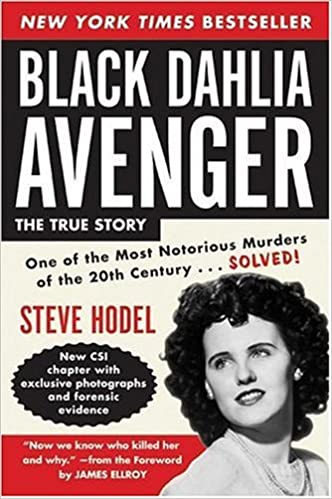
True Crime Studies: Black Dahlia Avenger, it’s more blind accusation than actual theory
More Videos
Published
5 years agoon
By
Rachel RothWhy are there so many books about the Black Dahlia? Every couple of years brings a new one to light and they all have their own theories about who done it and from what I can tell, none of them match. One of the worst, however, is Steve Hodel’s Black Dahlia Avenger published in 2003, in which he accuses his own father of being the murderer. It’s a book that is as disjointed, melodramatic, entitled, and self-pitying as most of the Hodel family. If you haven’t heard of Steve Hodel, just know that he is the boy who cried murder. The king of the “Daddy Did It” genre. He’s not the pioneer though, that honor goes to Janice Knowlton who popularized it with her own Black Dahlia book, Daddy was the Black Dahlia Killer.
Steve Hodel went way beyond that though. He also accused his father of being the Zodiac, the one behind the “Lipstick Murders” (supposedly solved in 1946) and the “Jigsaw Murderer” of 1967. Which means, either Dr. George Hodel had an awful lot of free time, or his son just really loves to point the finger. Any believable theory offered in Black Dahlia Avenger is discredited by these continuing accusations.
Not that the book needed any of that to be discredited. Black Dahlia experts have debunked the book and all its presented “evidence” many times.
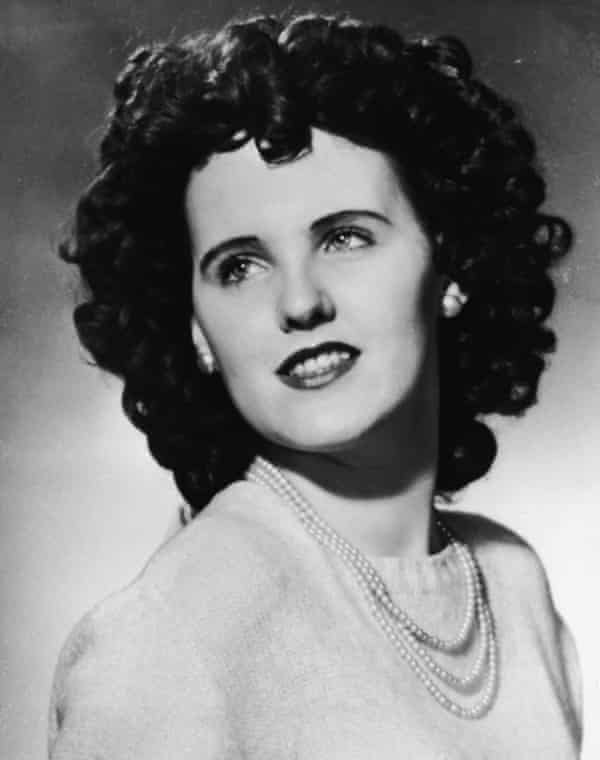
Black Dahlia Avenger is a book that tries so hard to be taken seriously. It reeks of desperation, biting off more than it can chew. For starters, Hodel is not a very good writer. Which wouldn’t be a problem if he didn’t spend so much time jumping paragraphs by separating multiple sections with subheadings as if he’s writing an essay. The chapters all feel like sections of an incoherent Wikipedia page.
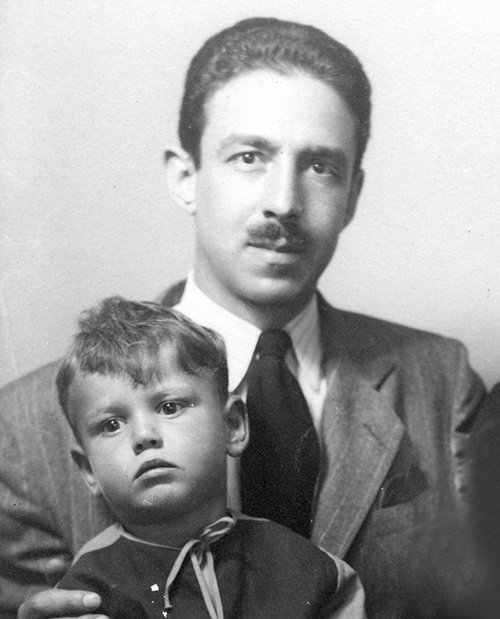
Most of this appears in the many “investigation” sections, which are all very disjointed. They appear and disappear sporadically throughout the book as Hodel breaks away to, more or less, whine about his childhood. This is honestly what really bothered me about Black Dahlia Avenger. Hodel inserts details that have nothing to do with the case in which he’s discussing. Most of this is meant, I think, to prove Dr. George Hodel’s abusive, controlling personality, but fails to do so.
None of it is necessary, and not only is it unnecessary, but it also contradicts some of Hodel’s later claims. One example is the claim that his father’s unseen and secret abuse turned his mother into a depressed alcoholic. Yet in her backstory, he admits to his mother being somewhat of a party girl who suffered from bouts of depression and drank a lot while married to her first husband. He also briefly mentions his father’s other wives, none of whom suffered the same “damage” when he divorced them. One even went on to become a Philippine Congresswoman.
Black Dahlia Avenger
On January 15, 1947, Elizabeth Short, also known as the Black Dahlia, was found in a vacant lot savagely mutilated, severed at the waist and completely drained of blood. There were cuts on her thighs and breasts and her face had been slashed from the corners of her mouth creating a “Glasgow smile.” The cause of death was determined to be hemorrhaging from lacerations to her face and shock from blows to the head and face. It was a onetime event with no murder like it to come before or after, and most of the leads went cold.
Jump to the year 1999 as retired LAPD homicide detective Steve Hodel learns of his father’s passing. His father was the prominent doctor George Hodel who was well known among the Hollywood elite. He treated women for venereal disease, including many actresses. They had a fractured relationship and were just starting to reconnect after so many years. As part of the mourning process, Hodel goes to his father’s house to visit his widow June and this is where things start to unravel.
Hodel is very odd in regarding June. She is quiet and monotone, as many people would be after their spouse dies, yet he seems genuinely confused about this behavior. His bewilderment to June is worded as such:
“She was hesitant, secret, aloof and cautious with me. Was this an Asian cultural response to dealing with grief that kept mourners from sharing emotions? I’d never seen it before, particularly when as a P.I. I worked with my Japanese colleagues on criminal cases. Maybe it was only specific to widows. I didn’t know, but I also sensed there was something deeper- and it didn’t have anything to do with grief.”
Black Dahlia Avenger pg. 36-37
God forbid a woman doesn’t want to socialize with her dead husband’s grown son who she barely knows just days after becoming a widow. June (probably to get him off her case) then hands him a box of family photos that belonged to his father and it’s what’s in the box that cracks the case. (Cue Phantom of the Opera music) Inside is a picture of Elizabeth Short! But not really.
Among the pictures are two photographs of a young woman with black hair sitting in intimate poses. Hodel believes her to be the late Elizabeth Short even though she looks nothing like her. Other than the fact that they’re both white women with dark hair, Short and the woman in the two photos don’t look anything alike. Apparently all white women look the same to Steve. Short’s own sister thought so when she saw the photos sometime later.
“The first thing I noticed was that [it] was definitely not Betty. She never wore flowers all over her head only one on her ear. She always loved Hawaii and I think it made her think of that and Dorothy Lamour.”
Larry Harnisch from Heaven is Here
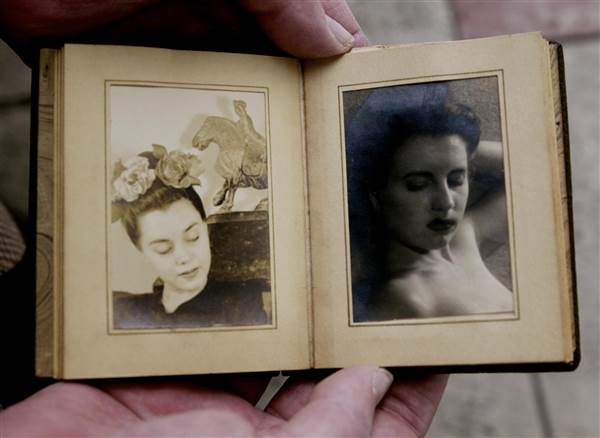
This is the grand piece of evidence and the rest isn’t much better. Contradictions, random accusations, and “clues” that Hodel magically links to his father. Now, I will say, that when the book actually focuses on Elizabeth Short, it’s not bad. When Hodel stops reciting childhood memories that offer nothing to his theory, we’re reminded of what this book is supposed to be about: the Black Dahlia.
Unfortunately, Hodel is not very good at tieing it all together. Short’s final few months of life are recounted through eye-witness accounts, but they don’t follow any pattern. Some aren’t even in order. He just dumps it all down and expects the readers to craft the timeline themselves.
Tamar and Root of Evil
There are multiple sections in Black Dahlia Avenger that deal with George Hodel’s daughter, the author’s half-sister, Tamar Hodel who accused her father of molesting her when she was 14 in 1949. Tamar is Hodel’s centerpiece in debouching his father’s character, but anyone who knew anything about Tamar would have their doubts about her integrity. There are many indications that she lied after becoming angry with her father over a personal matter. She also accused over a dozen classmates, male neighbors, and family friends of raping her.
She is dealt with in detail in the podcast, Root of Evil, where her own children admit to how manipulative she was.
Tamar is interviewed in Black Dahlia Avenger but nothing she says makes sense. I don’t know if Hodel put words into her mouth or if Tamar just doesn’t know what she’s talking about. One glaring error I couldn’t help but find humorous was when Tamar has a “memory” of her father naming one of her dolls Elizabeth Anne while laughing manically. She then sits back in shock at the realization that the Black Dahlia’s full name was ELIZABETH ANNE SHORT. Except that it wasn’t. Elizabeth Short didn’t have a middle name. The name “Anne” was included by accident by the LA Times during the 1970s. Short’s mother later corrected this fact and testified that her daughter never had a middle name.
Honestly, the Root of Evil podcast makes a much better case for Dr. George Hodel’s guilt. It has a few holes but it’s much more believable.
Verdict
If you want to read up on Black Dahlia, do yourself a favor and skip this book. I did not go into this with an impenetrable preconceived theory about the case. I have my own theory about who did it, but I was open to considering whatever argument Hodel had to offer, unfortunately, the story he’s crafting feels like a soap opera.
In simple terms, Black Dahlia Avenger lacks common sense. It’s also just plain bad. As a closing point, I feel the need to point out that despite Steve Hodel’s claim that his father was “the prime suspect”, Dr. George Hodel was actually one of the narrowed down 21 suspects, most of whom were quickly eliminated. The real prime suspects were actually Leslie Dillon and Walter Bayley.
 (2 / 5)
(2 / 5)
Rachel Roth is a writer who lives in South Florida. She has a degree in Writing Studies and a Certificate in Creative Writing, her work has appeared in several literary journals and anthologies. @WinterGreenRoth

You may like
1 Comment
Leave a Reply
Cancel reply
Leave a Reply
This site uses Akismet to reduce spam. Learn how your comment data is processed.
Book Reviews
The Hotel: We’ll All Be There Soon.
Published
2 weeks agoon
March 17, 2025By
C M ReidDaisy Johnson’s, The Hotel is a collection of stories that tell the tale of a hotel built on cursed land. Originally written and recorded as a series for BBC Radio 4 in 2020, (you can find the recordings here https://www.bbc.co.uk/programmes/m000mrcg/episodes/player )
The fourteen-story collection was released in hardcover in 2021. Johnson’s prose is haunting, weaving together the stories of generations of families who have been tempted, forced, or serendipitously dumped at The Hotel. Most leave the message, “I’ll be there soon,” and many disappear from room 63.
- ‘The British literary heir to Stephen King’ Johanna Thomas-Corr, Sunday TimesA triumph of contemporary horror from the Booker Prize-shortlisted author, this collection of short stories will haunt you long after you turn the final pageA place of myths, rumours and secrets, The Hotel looms over the dark Fens, tall and grey in its Gothic splendour
- Built on cursed land, a history of violent death suffuses its very foundations –yet it has a magnetism that is impossible to ignore
- On entering The Hotel, different people react in different ways
Last update on 2025-03-17 / Affiliate links / Images from Amazon Product Advertising API
The Plot.
The Hotel tells the stories of the people who are drawn to The Hotel, or, more accurately, the ground the hotel is built on. The first story explains what we know about the hotel, its tendencies, moods, and … hobbies. We are then introduced to Mary Southgraves, ‘The Witch’, who comes to live with her husband on the land on which The Hotel will be built. The villagers in the pond drown her for predicting a sickness that takes the village children, (no this is not a spoiler she tells you she dies on the first page of her chapter.)
The proceeding chapters build upon this story. We meet the workers who are brought in to fill the pond to begin construction. A child of a guest in 1968 who meets another girl who may or may not actually be there. A maid who takes part in séances and Ouija board sessions. The stories progress through time into the present.
Highlights.
The haunting prose of The Hotel does the majority of the heavy lifting for this collection, which makes sense since it began as a podcast series. Johnson’s prose leans towards poetry, albeit more Poe than Keats.
The repetition of specific characters and family names throughout the different stories was intriguing, giving the stories links. These links trigger a sense of recognition for the reader. There is also a sense of anticipation, knowing what has happened to these families already, we wonder how much more they can withstand. The Hotel is like a curse following these families, but I think Johnson is commenting on lineage and the consequences of past actions. The sins of the father and all that.
- Fifteen highly original and darkly unsettling supernatural stories, performed by some of Britain’s finest actresses ‘This is what we know about The Hotel
- It is bigger on the inside than on the outside
- Do not go into Room 63
Last update on 2025-03-17 / Affiliate links / Images from Amazon Product Advertising API
Drawbacks.
These stories can get confusing at times and I think this is due to the briefness of the stories. It’s hard to keep track of a character that you have spent four pages with and remember them three stories later. I found myself having to stop and turn back to check if that person was who I thought they were. This pausing to turn back interrupts the reading experience. It pulls you out of the story and destroys the atmosphere that Johnson has worked to create.
The Final Take.
The Hotel was an interesting read. Johnson is a talented writer who has published a collection of linked stories that will keep the reader turning pages if only to find out the final fate of these families. That being said, it is obvious that the stories were initially written for a podcast. I’m not sure if it’s the way they are put together or… I don’t know, there’s just something ‘podcasty’ about them. As such I would recommend listening to the audio episodes (see the link above) over reading the book.
 (3 / 5)
(3 / 5)
On Halloween in 2016 Josh Malerman, author of Bird Box, released A House At The Bottom Of A Lake (gosh this is a hefty title!). Last week, I picked this slim book up off my library’s Adult Horror shelves, not knowing what to expect. What I got was a novella that should have been shelved in the teen lit section. Perhaps it is the rather weird underwater sex scene that precludes it from those shelves.
- From the New York Times bestselling author of Bird Box and Malorie comes a haunting tale of love and mystery, as the date of a lifetime becomes a maddening exploration of the depths of the heart
- “Malerman expertly conjures a fairy tale nostalgia of first love, and we follow along, all too willingly, ignoring the warning signs even as the fear takes hold
- ”—Lit Reactor The story begins: young lovers, anxious to connect, agree to a first date, thinking outside of the box
Last update on 2025-03-10 / Affiliate links / Images from Amazon Product Advertising API
The Plot.
When James asks Amelia out on a date during summer break, canoeing was the last thing that she expected. Borrowing his uncles canoe, James hopes he can show Amelia an exciting time, because he really likes this girl! The date starts well and the conversation, if stilted at times, is banter-ey and cool.
They head out on the first lake, but James has an idea that they might have a better time on the lake that joins to this one. It is quieter, no speed boats to show him up, they’ll be able to eat their picnic lunch in peace and quiet. When they arrive, though, they notice a tunnel, that may lead to a third lake. Eager to show Amelia that he is an exciting kind of guy, James heads through the tunnel.
Lo and behold, it is another lake! Albeit, a bit murky and deserted, but that’s alright. That is until they notice that beneath the bow of the boat is a tiled roof. Beneath that tiled roof is a whole house. What ensues is a summer of falling in love and exploring a sunken house that may not be as empty as they thought.
Highlights.
Malerman writing the internal monologue of an angsty seventeen-year-old on a first date is one of the most authentic things I’ve read for a long time. Even down to James worrying about revealing that his dad owns the hardware shop he works in. Scared that Amelia will think that is all he is going to do with his life.
The ending (which of course I cannot discuss here) was well done, although a little contrived and predictable. It felt as if it had been almost tacked on the end as an afterthought. Perhaps Malerman finished the story without the final chapter, but was encouraged to add that last bit to give readers some closure
- “A book that demands to be read in a single sitting, and through the cracks between one’s fingers
- There has never been a horror story quite like this
- Josh Malerman truly delivers
Last update on 2025-03-10 / Affiliate links / Images from Amazon Product Advertising API
Drawbacks.
Malerman is a good writer, we have seen this in the many novels he has released since Bird Box. A House At The Bottom Of A Lake did not meet the usual standard. There are many reasons I say this. The first is a lack of creativity in descriptive passages in this book. They all felt pretty drab and began to become repetitive by the end of the story. I don’t know how many, times Malerman compared the way that James and Amelia were moving under the water in their scuba suits as ‘Astronaut-like’ or ‘Astronaut-esque’ or ‘ Like he was walking without gravity’, but really can you find another comparison please because this one is all used up!
As I mentioned in the intro, this did feel like a YA novel. Not only because both of the main characters are seventeen, but the prose is a too simple to be engaging. A House A The Bottom Of A Lake might be marketed differently in Australia (where this humble reviewer lives), perhaps making it to the YA shelves in the US or UK, but this is definitely not adult horror.
The Final Take.
Josh Malerman is a favorite of mine. I tend to pick up his books, blurb unread, because I will generally enjoy what he is putting out there. The exception to this rule is A House At The Bottom Of A Lake (if I never have to type that title again I will be pleased!). It just didn’t hit the way his other novels have and I was disappointed.
 (2 / 5)
(2 / 5)
Imagine this. You’re home alone, waiting for your partner to return, when you hear a knock on your door. You answer it to see a family of five, bundled up against the cold. The father, a kindly older gentleman, explains that he used to live in this house as a boy. And he would love to show it to his family.
Do not let them in.
The story
Released in June 2024, We Used To Live Here is author Marcus Kliewer’s debut novel. It tells the story of Eve, who just purchased a beautiful house with her partner, Charlie. Their plan is to flip the house and sell it.
One night, while waiting for Charlie to come home, Eve is surprised by a knock at the door. It’s a man named Thomas Faust and his family.
Thomas explains that he grew up in the house and hasn’t been in the area in years. Would Eve let them in so that he can show the home to his children?
Against her better judgment, Eve lets them in. She regrets this almost at once when Thomas’s daughter vanishes somewhere into the house.
What worked
I always appreciate a book that allows you to play along with the mystery. And this book does that better than just about any other I’ve seen.
Pay close attention to the chapters, to the words that aren’t there. To everything about this novel.
This is mostly down to Kliewer. This is ultimately his work of art. But the production value is also fantastic. I don’t want to ruin the multiple mysteries, so I’ll just say this. There are clues in this book that require some specific artistic choices in the page layouts in this book. And I loved that.
If you’d like to experience another horror book review, check out this one.
We Used To Live Here is also the kind of story that makes you question everything right along with the main character, Eve. Eve is a great main character. But she might be an unreliable narrator. She might be experiencing every single horror described, exactly as it’s described. Or, she might be having a psychotic breakdown. Through most of the book, we can’t be sure. And that is so much fun.
Finally, the weather plays a large part in this story. There are several stories in which the weather or the land itself could be considered a character. Even an antagonist. This is certainly one. The winter storm is the thing that traps the family in the house with Eve. It also makes escaping the home difficult. Reading this book during the winter was especially impactful. Most of us know what it feels like to be shut in by a storm. I’ve personally lived through some of those storms that are just referred to by their year, as though they were impactful enough to claim the whole 365 days for themself. And that was with people I liked. Imagine what it would feel like with strangers. It’s a staggering thought and one that we explore in depth in this book.
- Get Out meets Parasite in this eerily haunting debut and Reddit hit—soon to be a Netflix original movie starring Blake Lively—about two homeowners whose lives are turned upside down when the house’s previous residents unexpectedly visit
- As a young, queer couple who flip houses, Charlie and Eve can’t believe the killer deal they’ve just gotten on an old house in a picturesque neighborhood
- As they’re working in the house one day, there’s a knock on the door
Last update on 2025-03-08 / Affiliate links / Images from Amazon Product Advertising API
In the end, We Used To Live Here is a fantastic book. It’s the sort of story that sneaks into your brain and puts down roots. And if this is just the first book we’re getting from Kliewer, I can’t wait to see what else he comes up with.
 (5 / 5)
(5 / 5)

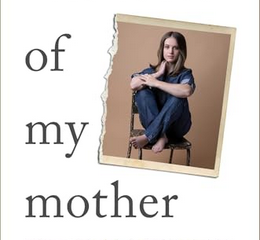







nonpersonne
September 19, 2020 at 11:44 am
Agreed. Hodel recently consulted a medium to raise some spirit (presumably Beth Short’s). He’s gone on to accuse his father of also being the Lipstick Killer, BTK, etc. And those photographs are definitely NOT of Elizabeth Short.